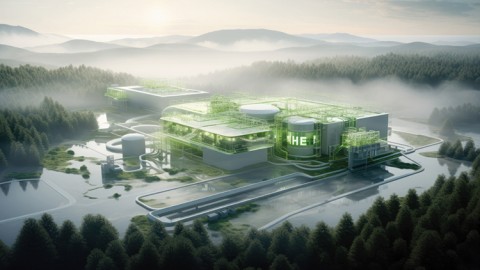There is no question that when it comes to Egypt’s potential to harness and transport natural gas, Egypt has exceeded expectations of the international oil and gas community. In order for Egypt to remain on top, storage solutions for the transitional fuel is imperative.
In brief, natural gas is a hydrocarbon that is non-renewable, colorless, odorless, combustible, and environmentally friendly. In addition, it’s expanding. Natural gas is almost universally used in homes and can be stored relatively effectively; it is far more efficient than renewable energy sources.
However, questions remain regarding natural gas storage methods, the size of the potential for Egypt’s natural gas storage capacity, and the most typical types of natural gas storage facilities.
General Overview of Storage Techniques
First of all, the most popular place to store oil and natural gas is in exhausted fields, usually near major population centres. Businesses can utilize existing pipeline connections, collection systems, and wells by turning a field into a storage facility. Because they are the most accessible, they are also the most popular sites.
Second of all, if an impervious cap rock is placed on top of the water-bearing sedimentary rock formation, then the aquifer can be used for gas storage. Although exhausted producing fields and aquifers have a similar geology, using aquifers for gas storage typically calls for additional base gas, or cushion gas, and more stringent monitoring of injection and extraction efficiency. The existence of an active water drive may improve deliverability rates.
Furthermore, the withdrawal and injection rates offered by these storage facilities are exceptionally high in comparison to their operating gas capacity. The needs for base gas are minimal. The bulk of salt cavern storage facilities are found in the Gulf Coast states, namely in salt dome formations. When comparing the cost of cavern construction to depleted field conversions, the former is more expensive per thousand cubic feet of working gas capacity. However, the per-unit cost of each thousand cubic feet of gas injected and withdrawn is lower due to the ability to perform multiple cycles of withdrawal and injection each year.
With that, it’s important to note that greater underground storage is needed to compensate for seasonal variations in consumption as well as large peak loads, which are caused by fluctuations in gas consumption. The two types of underground storage are classified as: artificial cavern storage found in salt mines, and organically formed porous spaces such as water-bearing aquifers or former oil and gas reservoirs in permeable rock formations, which are referred to as pore storage
The Way Forward
These days, there are significant seasonal variations in gas consumption between summer and winter in addition to transient shifts in demand for gas. This is counteracted by storing a significant amount of gas underground in our gas storage facilities. In order to be able to safely and quickly make up for winter demand peaks, the gas storage facilities are also crucial to the stability of the gas networks. As suggested by a Climate Change Specialist, “[Storage facilities] are the missing puzzle piece to Egypt becoming a leading country with natural gas exports and energy security; there is no point in having a surplus of energy and not storing and making use of the modern efficient techniques.”
Further variations will arise in the future decarbonized energy supply if, for example, the sun and wind are not available. This energy supply will have a high percentage of renewable energies. It will thus be increasingly more crucial in the future to be able to respond quickly to rising demand changes.
Nevertheless, subterranean gas storage facilities have substantially bigger gas storage capacities than surface storage solutions. It is absolutely essential to make a distinction between porous rock storage facilities and natural reservoirs in porous rock, which function similarly to stable sponges and allow for the large-scale storage of natural gas. Cavern storage facilities are high injection and withdrawal capacity subterranean salt domes with artificially constructed voids. There are many hundred meters high in these caverns.
Finally, because it can be stored underground like natural gas, hydrogen is viewed as the key to the energy shift. The regional hydrogen industry depends on large-scale subterranean storage, which will also increase the sector’s economic feasibility. The viability of appropriate storage facilities for the hydrogen market is still in question. However, in order to facilitate the conversion and development of additional subterranean hydrogen storage facilities, a clear regulatory framework is currently required.








